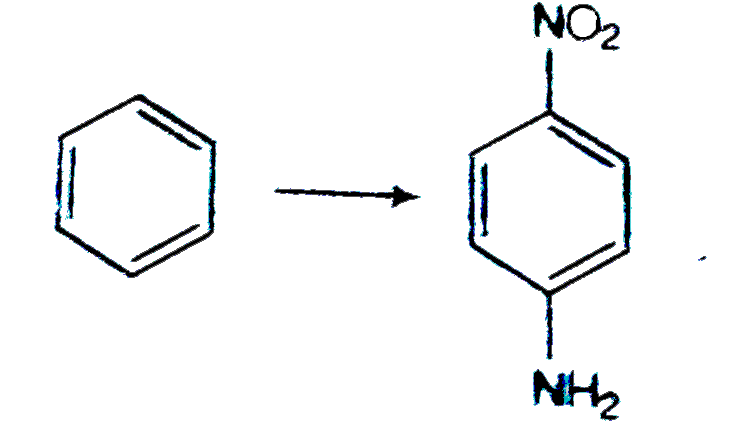How will you bring out the following conversions ?
Ethane to ethyne
To convert ethane (C2H6) to ethyne (C2H2), we can follow these steps:
Step 1: Halogenation of Ethane
- Reaction: Ethane (C2H6) is reacted with chlorine (Cl2) in the presence of sunlight (UV light).
- Product: This reaction leads to the formation of ethyl chloride (C2H5Cl).
Step 2: Dehydrohalogenation to Ethene
- Reaction: Ethyl chloride (C2H5Cl) is treated with alcoholic KOH (potassium hydroxide).
- Process: In this reaction, a hydrogen atom (H) from the ethyl group and a chlorine atom (Cl) from the ethyl chloride are eliminated, resulting in the formation of ethene (C2H4).
Step 3: Halogenation of Ethene
- Reaction: Ethene (C2H4) is subjected to bromination using bromine (Br2) in a solvent like carbon tetrachloride (CCl4).
- Product: This reaction produces 1,2-dibromoethane (C2H4Br2).
Step 4: Dehydrohalogenation to Ethyne
- Reaction: 1,2-dibromoethane (C2H4Br2) is again treated with alcoholic KOH.
- Process: In this step, a hydrogen atom (H) from one carbon and a bromine atom (Br) from the other carbon are eliminated, leading to the formation of ethyne (C2H2).
Final Summary of the Conversion:
1. Ethane (C2H6) + Cl2 (in sunlight) → Ethyl chloride (C2H5Cl)
2. Ethyl chloride (C2H5Cl) + KOH (alcoholic) → Ethene (C2H4)
3. Ethene (C2H4) + Br2 (in CCl4) → 1,2-Dibromoethane (C2H4Br2)
4. 1,2-Dibromoethane (C2H4Br2) + KOH (alcoholic) → Ethyne (C2H2)
- Reaction: Ethane (C2H6) is reacted with chlorine (Cl2) in the presence of sunlight (UV light).
- Product: This reaction leads to the formation of ethyl chloride (C2H5Cl).
- Reaction: Ethyl chloride (C2H5Cl) is treated with alcoholic KOH (potassium hydroxide).
- Process: In this reaction, a hydrogen atom (H) from the ethyl group and a chlorine atom (Cl) from the ethyl chloride are eliminated, resulting in the formation of ethene (C2H4).
- Reaction: Ethene (C2H4) is subjected to bromination using bromine (Br2) in a solvent like carbon tetrachloride (CCl4).
- Product: This reaction produces 1,2-dibromoethane (C2H4Br2).
- Reaction: 1,2-dibromoethane (C2H4Br2) is again treated with alcoholic KOH.
- Process: In this step, a hydrogen atom (H) from one carbon and a bromine atom (Br) from the other carbon are eliminated, leading to the formation of ethyne (C2H2).
1. Ethane (C2H6) + Cl2 (in sunlight) → Ethyl chloride (C2H5Cl)
2. Ethyl chloride (C2H5Cl) + KOH (alcoholic) → Ethene (C2H4)
3. Ethene (C2H4) + Br2 (in CCl4) → 1,2-Dibromoethane (C2H4Br2)
4. 1,2-Dibromoethane (C2H4Br2) + KOH (alcoholic) → Ethyne (C2H2)
Topper's Solved these Questions
- HYDROCARBONS BOOK - ICSECHAPTER - HYDROCARBONS EXERCISE - ESSAY (LONG ANSWER) TYPE QUESTIONS
28 Videos
- HYDROCARBONS BOOK - ICSECHAPTER - HYDROCARBONS EXERCISE - OBJECTIVE (MULTIPLE CHOICE) TYPE QUESTIONS
71 Videos
- HYDROCARBONS BOOK - ICSECHAPTER - HYDROCARBONS EXERCISE - VERY SHORT ANSWER TYEP QUESTIONS
47 Videos
- EQUILIBRIUM BOOK - ICSECHAPTER - EQUILIBRIUM EXERCISE - NCERT TEXT-BOOK EXERCISE
109 Videos
- HYDROGENBOOK - ICSECHAPTER - HYDROGENEXERCISE - NCERT TEXT-BOOK EXERCISE (With Hints and Solutions)
53 Videos
Similar Questions
How will you bring about the following conversions ?

View SolutionHow will you bring out the following conversions ?
Ethyne to ethane
View SolutionHow will you bring out the following conversions ?
Ethene to ethyne
View SolutionHow will you bring out the following conversions ?
Ethyne to methane
View SolutionHow will you bring out the following conversions ?
Ethyne to but-2-yne
View SolutionHow will you carry out the following conversion?

View SolutionHow will you carry out the following conversion?

View SolutionHow will you carry out the following conversion?

View SolutionHow will you carry out the following conversion?

View SolutionHow will you carry out the following conversion?

View Solution
